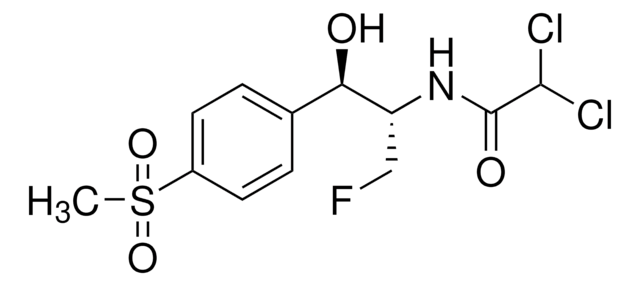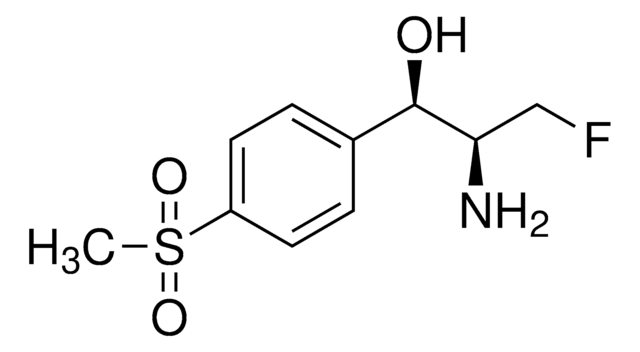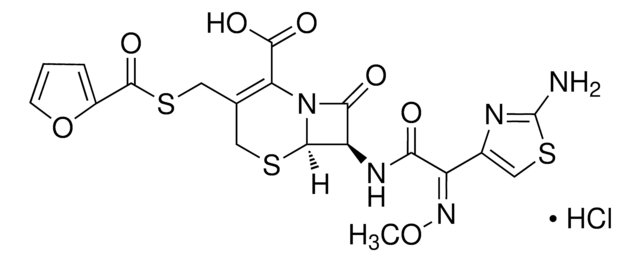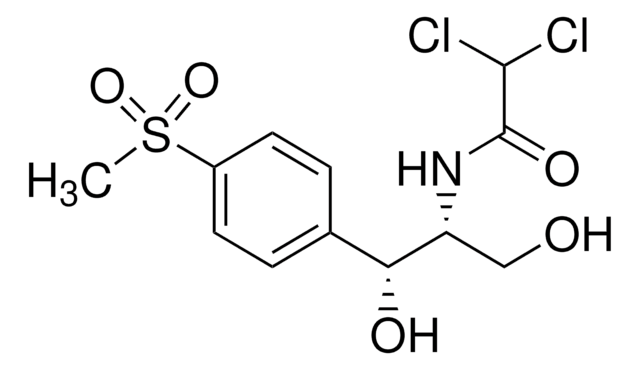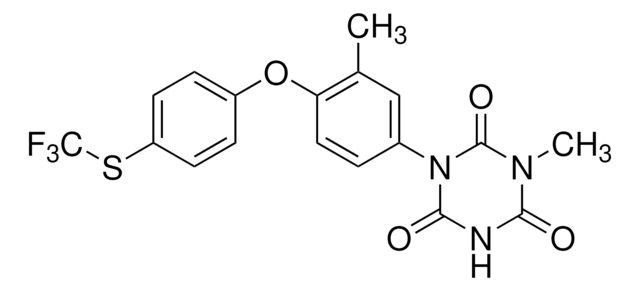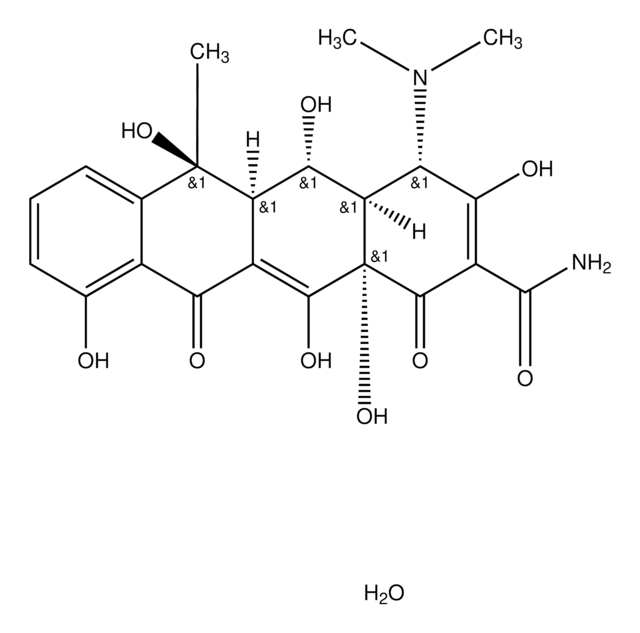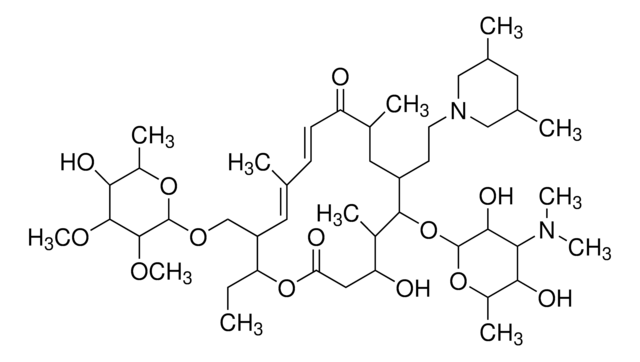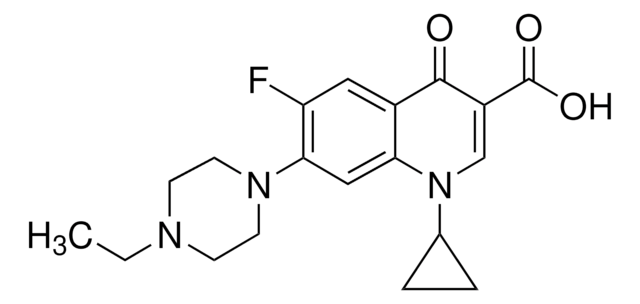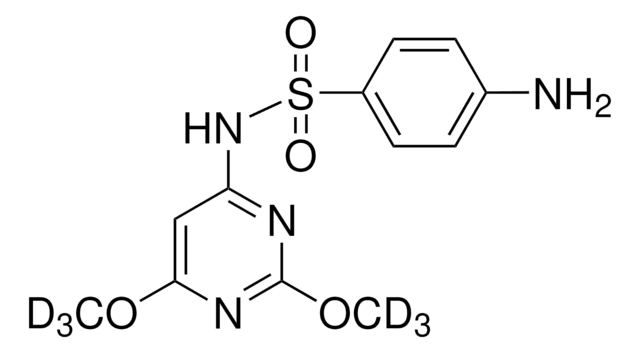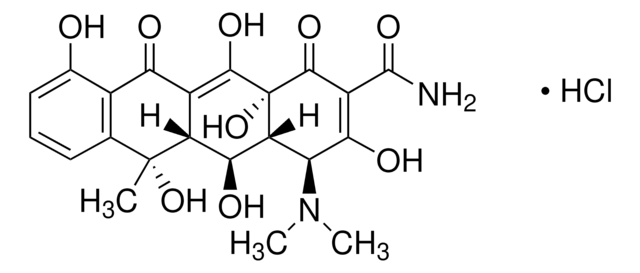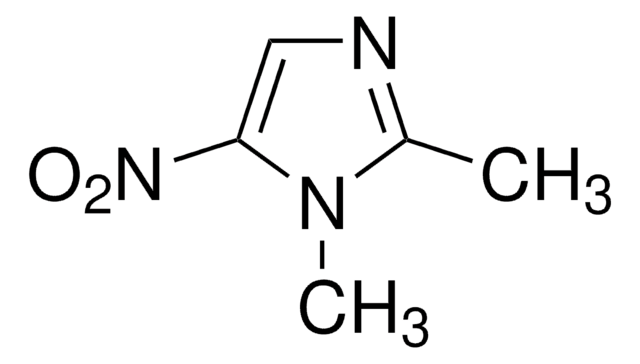F1427
Florfenicol
analytical standard, for drug analysis
Sinonimo/i:
Aquafen, Nuflor, SCH-25298, [R-(R*,S*)]-2,2-Dichloro-N-[1-(fluoromethyl)-2-hydroxy-2-[4-(methylsulfonyl)phenyl]ethyl]acetamide
About This Item
Prodotti consigliati
Grado
analytical standard, for drug analysis
Livello qualitativo
Stato
solid
tecniche
HPLC: suitable
gas chromatography (GC): suitable
applicazioni
forensics and toxicology
pharmaceutical (small molecule)
veterinary
Formato
neat
Stringa SMILE
CS(=O)(=O)c1ccc(cc1)[C@@H](O)[C@@H](CF)NC(=O)C(Cl)Cl
InChI
1S/C12H14Cl2FNO4S/c1-21(19,20)8-4-2-7(3-5-8)10(17)9(6-15)16-12(18)11(13)14/h2-5,9-11,17H,6H2,1H3,(H,16,18)/t9-,10-/m1/s1
AYIRNRDRBQJXIF-NXEZZACHSA-N
Cerchi prodotti simili? Visita Guida al confronto tra prodotti
Descrizione generale
Applicazioni
- To measure florfenicol and its main metabolite florfenicol amine in tilapia meat by solid phase extraction (SPE) and ultra high-performance liquid chromatography-tandem mass spectrometry (UHPLC-MS/MS)
- Multi-residue analysis of three amfenicols in animal feed samples by HPLC-MS/MS method, following European Commission Decision 2002/657/EC(2)Determination of florfenicol in different animal feedstuff samples by thin layer chromatography (TLC) coupled with HPLC-UV detection
- Residue analysis of florfenicol in broiler meat and liver samples by a reversed phase-HPLC method in combination with UV detection at 223 nm
- Competitive indirect-chemiluminescent enzyme-linked immunosorbent assay (CL-ELISA) based quantitative analysis of florfenicol and its major metabolite florfenicol amine in chicken muscle samples, validated as per Commission Decision 2002/657/EC
Altre note
Avvertenze
Danger
Indicazioni di pericolo
Consigli di prudenza
Classi di pericolo
Aquatic Acute 1 - Aquatic Chronic 1 - Repr. 2 - STOT RE 1
Organi bersaglio
Liver,Brain,Testes,Spinal cord,Blood,gallbladder
Codice della classe di stoccaggio
6.1C - Combustible acute toxic Cat.3 / toxic compounds or compounds which causing chronic effects
Classe di pericolosità dell'acqua (WGK)
WGK 3
Punto d’infiammabilità (°F)
Not applicable
Punto d’infiammabilità (°C)
Not applicable
Dispositivi di protezione individuale
Eyeshields, Gloves, type N95 (US)
Scegli una delle versioni più recenti:
Possiedi già questo prodotto?
I documenti relativi ai prodotti acquistati recentemente sono disponibili nell’Archivio dei documenti.
I clienti hanno visto anche
Il team dei nostri ricercatori vanta grande esperienza in tutte le aree della ricerca quali Life Science, scienza dei materiali, sintesi chimica, cromatografia, discipline analitiche, ecc..
Contatta l'Assistenza Tecnica.